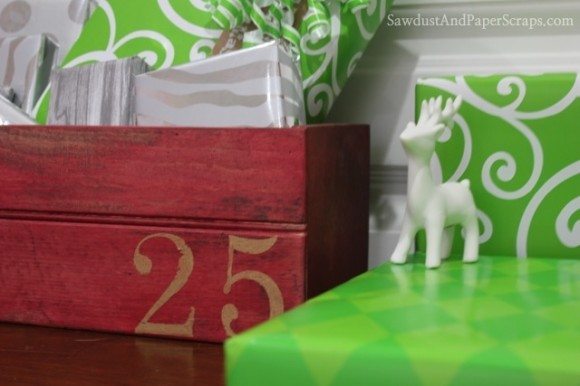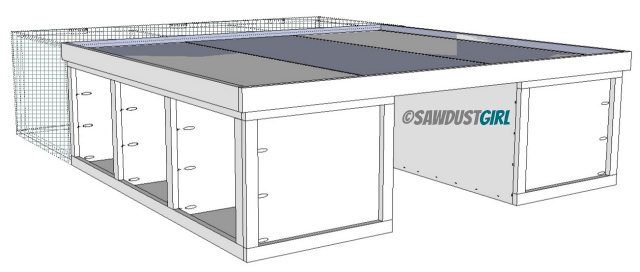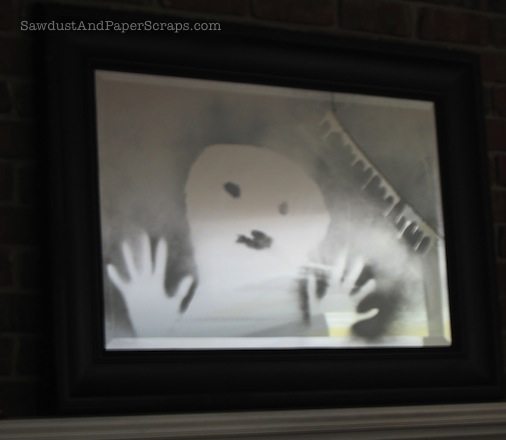How to Make a DIY Fabric Car Seat Cover
Today, Jessica from This Too Projects is here to show us how to make a Fabric Car Seat Cover. This would be a great gift for a baby shower or Christmas or as we’re approaching spring! Jessica is a mother of 5 kids and still finds time to craft and do a little carpentry on the side as well!
First of all, I really want to thank Sandra for including me in this series! I’ve been living vicariously through her blog for quite some time now, and I can’t wait to branch out and make some more sawdust of my own–much to my husbands dismay!
This project all started when I stumbled across this site while looking for baby gift ideas. I have this awful, incurable disease that makes me think I can make just about anything I could buy. This time was not exception. Here is one of the covers I’ve been able to make and it really was easy!
Fabric Car Seat Cover Materials List
What you will need:
- Sewing machine
- 1 ½ yard of main material (fabric A)
- 1 ½ yard of contrasting material (fabric B)
- Sewable Velcro
- Thread
- Straight pins
- Scissors
- Water or air soluble fabric marker
- Tape measurer
- Straight edge
- Embellishments (large buttons, ribbon, fabric for yoyo’s, ect.)
Not necessary, but nice to have:
- Rotary mat
- Rotary ruler
- Rotary cutter
- Serger and thread
Let’s get started.
Step 1
First, working with your main fabric (fabric A), lay it out in front of you and decide how you want the finished cover to look. The cover will be roughly 34” wide x 42” long. Does the material have a distinct pattern to it or does it not matter? Mine has a cute bird pattern to it, and I wanted to make sure this was running vertical and straight.
Lay the material wrong side up. Now, fold over one side (the length) 19 inches. Smooth it all out and make sure it is straight.
Step 2
At this point, we need to get our rectangle drawn out. A straight edge is needed for this and a rotary ruler really comes in handy.
Measure 17” from the fold at the top of your material and several points down the length of the fabric making marks with your water/air soluble marker. The total length will be 42”, so keep making your marks down your fabric until you get there.
Connect the dots once you have all your marks in place and make sure everything is square – top and bottom.
Step 3
Now to make the rounded corners at the top and bottom.
At the top, measure from the corner you drew back toward the fold 10” and make a mark. From the same corner, measure down 10” and make a mark. You will now free hand a rounded edge between these two marks.
Step 4
The bottom needs a rounded edge as well. It’s the same process, just a slight difference in the measurements. From the bottom corner, measure back toward the fold 10” and make a mark. Again, from the bottom corner, measure up 14” along the line you made and make a mark. Now, start free handing your curve to connect the marks you just made.
Step 5
Pin along the lines you’ve drawn on your fabric to keep it from shifting while cutting. Now cut and you should end up with this.
Step 6
We’re now going to mark the locations of the straps.
Measure down 18 ½” along the fold and make a mark with your fabric pen. From this mark, measure over 3” and 5 ½ “ marking each place. Draw a line connecting these two marks.
Repeat on the other side of the fold.
Step 7
Okay. Remember that yard and a half of contrasting fabric (Fabric B)? Now’s the time to get that out.
Lay it out just like you did the main fabric A: wrong side up, fold over roughly 19” and smooth out. We are going to use the piece we already measured and cut from Fabric A as our pattern for cutting Fabric B.
Line up the folds of both fabrics and smooth Fabric A (the pattern piece) over Fabric B. Pin Fabric A in place.
Now cut.
Step 8
Unpin everything and separate Fabric A from Fabric B.
Lay Fabric B out on a flat surface wrong side up. Lay Fabric A right side up on top of Fabric B making a sort of material sandwich.
Step 9
Get your pins ready for this next step.
Starting in the center and working your way out to the edges, you are going to pin and smooth, pin and smooth, and pin and smooth until you have used up every last pin you own. (At least it ‘s going to feel like that by the end of this step.) Ideally, your two pieces of material should match up perfectly.
Do a quick check around the edges just to make sure this is the case. If not, re-pin in that area or, worst-case scenario, get the scissors out and do a little trimming. Set this aside for a few minutes.
Step 10
We are now moving on to the straps that will hold the cover in place on the car seat handle.
From your leftover fabric of both A and B, you will need to cut 2 – 3” x 7 ½” rectangles (giving you a total of 4 rectangles). This is another time the Rotary tools will come in handy, but you can definitely get by without them.
Step 11
Place one Fabric A and one Fabric B right sides together and stitch a ¼” seam around it leaving a small opening to turn. Trim your corners and turn.
After you have turned the strap right side out, topstitch around the edges. Make sure you close the turn opening as you go.
Step 12
Next comes the Velcro. I just eyeballed the length I needed by holding it across the end of each strap and then cutting. You will need to decide at this point if you want to have the contrasting material showing or if you want the main fabric showing on the straps. This is just a matter of personal preference. Once you decide this, the Velcro can be attached to the straps.
For some reason, having the ‘hook’ side on the top and the ‘loop’ side on the bottom makes more sense to me. (Fabric A will be showing on mine with Fabric B on the inside.) Once again, there isn’t really a right or wrong on this.
Do remember, though! You have to have one on the front and one on the back for the straps to work right. Play around with it a little and get a feel for how the straps will attach. That should give you a better idea of how you want it to work.
Step 13
Now to mark the straps for attaching them to the cover. Here is a lovely hand drawn diagram to show you where to make your marks. (Heavy sarcasm, but you get the idea.)
Do this on both front and back of both straps.
The top line on the straps will be your guide for placement on the cover. Remember those lines we drew on the cover 18 ½” down the middle and 3” over? Find both of those lines and match up the top line on each strap. Pin the straps in place making sure they are both straight. Wonky straps just won’t do!
Step 14
Now, sew the straps in place.
Step 15
There are several ways one of these covers can be finished. I chose to do a rolled hem on mine, but I realize not everyone has a serger available.
Here are a couple of other ideas.
Use bias tape around the edge. This will give a very polished look to the cover. You can make your own or purchase some at a fabric store like Joann’s or Hobby Lobby. If you choose to make your own, just remember to purchase enough fabric to accomplish this.
Another idea is to sew the cover right-sides-together leaving a hole for turning and then topstitching around the edges. This would be a change at the beginning of the whole process, so one would have to make the decision early.
Step 16
This is always the most fun part of a project for me, and sometimes the most agonizing part as well. Here are two examples of what I’ve done to give the straps a more finished look.
All you need is a fabric circle, a fabric yoyo, and a large button! Now you’ve got yourself a simple grosgrain ribbon bow.
Nothing too complicated, but both add a little something to finish it all off.
Whew! I think that’s it!
Good luck! And if you have any questions, please feel free to contact me.






Have you ever made a fitted car seat canopy??